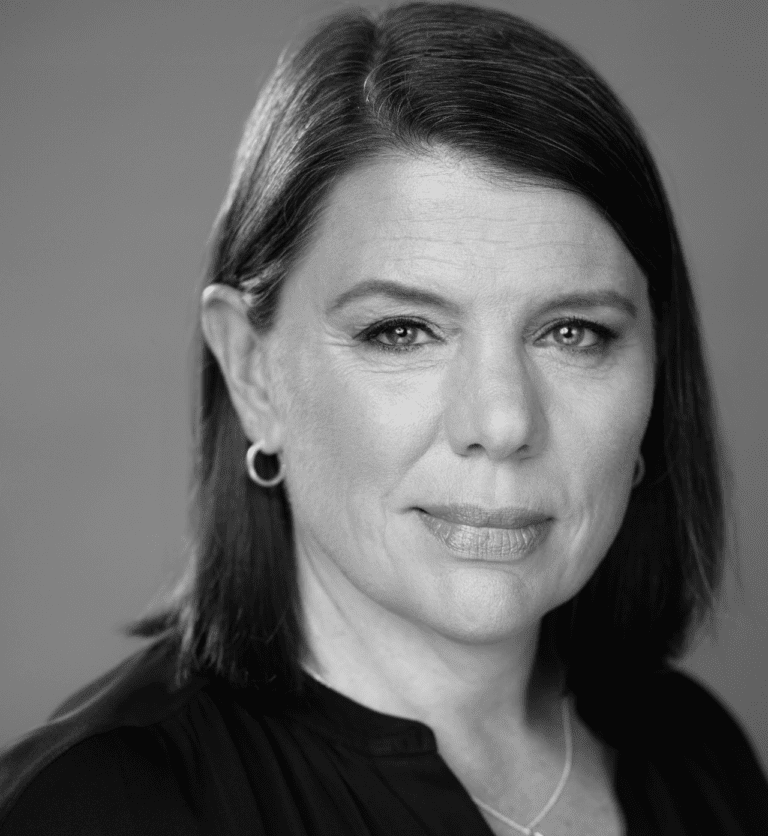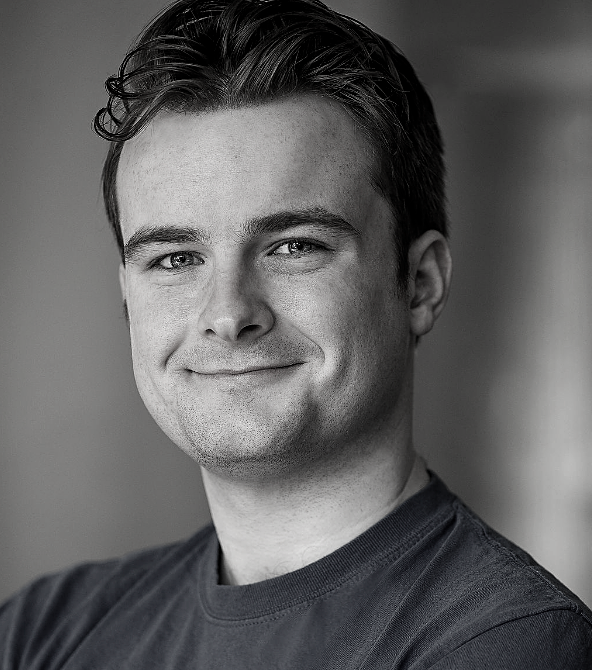REVIEW: Guillermo Verdecchia’s Feast is a fascinating text, but Tarragon’s new production feels hazy
The following review is a conversation between theatre critics Karen Fricker and Liam Donovan. Both attended Tarragon Theatre’s production of Feast on opening night, April 9, 2025. The following is a transcription of Karen and Liam’s conversation, which took place over Zoom on April 11, 2025. It has been edited for length and clarity.
The review contains mild spoilers about Feast.
Liam Donovan (LD): Having seen and reviewed the world premiere of Feast at Prairie Theatre Exchange (PTE) in Winnipeg, I knew what to expect from Guillermo Verdecchia’s script. But what was your initial response?
Karen Fricker (KF): I found the play really resonant and rich and layered. It brought up many associations and past experiences for me. It’s about globalization and privilege and travel and displacement and inequity — all things that interest me a great deal, and that I’ve thought and written about a lot.
Initially I found its depiction of the privileged experience of globalization thin and clichéd: the wealthy middle-aged couple sitting in their backyard drinking wine, on their devices, talking about the next exotic location he’s going to visit for his high-powered consultancy job. But I started to understand this was by design; the play becomes richer and more complex and less stuck in naturalism as it goes on. It keeps on evolving. For me, there’s a flip when the central character, Mark (Rick Roberts), meets a Starbucks barista and she talks about wanting to work at the Centre for Avant-Garde Geography — things get a little fanciful. Then once Mark meets Emeka (Tawiah M’Carthy) and goes on these wild foodie adventures, it gets more and more fabulous, and I found that the characters got richer and more nuanced.
Were there big ideas in the play that resonated with you?
LD: We’ve seen a lot of plays in Toronto recently that try to capture the overstuffed nature of contemporary life — for instance, Craze at Tarragon and Wights at Crow’s. Many of these shows have felt quite scattered, but Feast remains focused on the central character’s dilemma. It never comes off as immature in bringing so many ideas in, because it always returns to Mark’s struggle to connect with those around him, which kicks off with the inciting incident of losing a photograph of his wife and family.
Though the family is upper-class, there’s an attempt toward the end of the play to bring all the characters to the same level. Mark talks to a doctor of sorts, and she points out that they’re both workers being ground down by the same forces, even though he’s rich and she isn’t — I found that interesting.
KF: I found the monologues in the play particularly well-written. They’re beautifully nuanced pieces, including a monologue towards the end where the daughter, Isabel (Veronica Hortiguela), finds herself on an island, experiencing a form of good living. While this situation is provisional and connected to climate disaster, there is something that she’s found there about being with her partner, living simply, and being accepted into community. I found that interesting and rich.
LD: I also thought she seemed like her father’s daughter at that moment. Much of the show involves him jetting across the world in search of authentic experiences, and, similarly, she seems to love this experience of being in a small village, away from contemporary life, estranged from her mother.
KF: As for Soheil Parsa’s production, I did not feel that it fully came together; there was a chilliness to its tone and pacing, a static quality that didn’t match the dramaturgical wildness of the script. Compared to the straight, flat lines of this set (designed by Kaitlyn Hickey), do I recall you saying that the set of Thomas Morgan Jones’ PTE production was circular?
LD: Yes, and some people read this turntable as representing a plate for the titular feast. Jones’ production was extremely sparse, and I thought that minimalism worked for capturing this sense of placelessness, which Mark grapples with throughout.
The Tarragon production was very different, and I was sort of confused by the design. At times it felt over-designed, and at times under-designed. There was an upstage set of French doors, and I never really understood the logic behind why certain scenes would unfold behind them, certain ones in the middle of them, and certain ones in front of them. If there was a dramaturgical rule underlying that, I didn’t pick up on it.
More than anything, I was quite puzzled by the sound design (by Thomas Ryder Payne). I didn’t get why it was necessary for sound effects and music to be playing almost the entire show — it was a bit distracting. And, rare for the Tarragon Mainspace: I think the actors were wearing mics?
KF: My initial understanding was that their voices were amplified when they broke from a scene and spoke to the audience to narrate their experience. The switch was a way of signaling that the terms of engagement had shifted.
LD: That would make sense. I guess because talking to the audience is such a popular convention, I don’t see the necessity of altering their voices. That said, there were some very cool lighting moments (designed by Chris Malkowski) and some striking use of a cyclorama, as well as a surreal effect that made everything behind the glass doors look blurred.
KF: I agree with you, the design on a number of fronts felt provisional. On opening night, there was a flash of projected lines of verse about the mermaids singing that was so quick, it felt like it might have been a mistake. The projections of the Starbucks logo, too, could have had a greater impact if they were bigger, or in more contrast to the surface they were projected on.
LD: It sort of felt like the set and sound were getting in the way of the actors, so maybe that’s part of why the monologues resonated — they were just able to stand still and lock in.
KF: When I was living in London, U.K. around 2010, I wrote about a bunch of high-profile climate change plays happening then, and the dramaturgical challenge of staging ecological disaster and late-stage capitalist globalization. One strategy that appeared a lot at that point was plays with multiple stories overlapping and intersecting, without one central story, because that’s an archetypical experience of globalization — to move between experiences and places without being grounded anywhere. So, it’s interesting that this play, 15 years later, remains so focused, as you say. The central character holds the play together so that more outlandish or improbable things can happen.
What did you think about the character of Emeka, who works as a fixer for Mark?
LD: He’s a lot of fun, and changes the tone of the play significantly. He’s quite funny, and it helps that his worldview is so different from Mark’s.
I know two hours without intermission may be controversial, but I think it’s justified here, because there are so many twists and turns and I don’t know if you could stop in the middle of it. Emeka is a great example of why — he enters so late that it might be intermission before we get to know him.
KF: I found the character quite richly ambiguous. He goads Mark into these increasingly risky food adventures, but we also find out that he’s a family man, that he’s doing this work to support his daughters who are living in England — that becomes a key plot point. I enjoyed the character too because he is fun, and I also thought it was an interesting way for Verdecchia to bring the play to Africa and introduce an African character who, for me at least, was not a stereotype.
I thought Tamsin Kelsey as Julia was terrific. I didn’t recognize her and, looking at her bio, she’s been working for 20 years as an educator and is coming back to professional performing with this role. I enjoyed her performances both as Julia and in a smaller appearance as a Montenegrin doctor. She took me on the ride with Julia’s phantasmagorical experiences and monologues in the second half of the play, as their house was flooding and she started bunkering in.
LD: She was a grounding force in a way, which, you’re right, is impressive when the situation for her is so fanciful.
I don’t think anyone says outright when the play is set, but for me it does have this undercurrent of it being a near-future dystopia because of the flooding. Little hints that are dropped that imply it’s not quite now, but it’s soon.
KF: I think Roberts does a good job as the show goes on, living within his character’s complexities and sense of being lost. He’s not a victim, he’s made his choices, but he’s also lost within his choices and in the world. Roberts captured that in a way that I found resonant and I connected with.
LD: Yeah, he does keep digging in emotionally. Pretty much all the performances grow in intensity as the show goes on, which isn’t so unusual, but it’s interesting that this happens as the characters start becoming siloed off from one another, each in their own world. The stakes rise, but it’s very much on an individual level, not in group scenes.
Do you find Mark tragic — would you say he’s a tragic figure?
KF: For me, that’s the wrong question because it hews to an ancient form of dramaturgy that it feels to me like this play is trying to subvert from within. I found myself feeling that Mark’s situation is ambiguous. He’s complicit in getting himself where he ends up, sure, but other people played roles, and the world and late-stage capitalism also play a role.
LD: In a sense, it seems so simple from the outside, that he’s doing the wrong thing by leaving his family alone. But on the other hand, yeah, he kind of doesn’t have a choice, because it’s his job. And certainly Julia seems to agree — isn’t there a line where she says to Isabel, ‘well, he needs to be flying around all the time?’
KF: What I understood happens toward the end is that he almost got better, but then Emeka tempts him to one final adventure which he finds irresistible, but which results in him becoming another kind of global migrant who has no grounding in the world. I thought that was a rich way of bringing the themes around.
So, Liam, if you would recommend this show, who would you recommend it to?
LD: I’d be curious to see someone with a corporate job similar to Mark, who doesn’t go to the theatre often, sitting down and having to grapple with this for two hours. It might force them to actually consider why their life is so ‘go, go, go’ — why they’re burning themselves out for the sake of money.
KF: I have a friend who has a PhD in geography and thinks axolotls are really cute; I’m specifically going to recommend the play to him. Beyond that I think folks of my generation, people who read the New Yorker and the London Review of Books… the play will reward viewers with a broad knowledge base and interest in complex intellectual ideas. As such, I think it would suit a lot of traditional Tarragon subscribers.
LD: Right, Verdecchia is a Tarragon face, so perhaps this is meant to slot into a trustworthy slot in the company’s schedule and not be overly risky. And, given all the layers and references, I do think the already-published script will be nice to read, even after the show has closed.
Feast runs at Tarragon until April 27. Tickets are available here.
Intermission reviews are independent and unrelated to Intermission’s partnered content. Learn more about Intermission’s partnership model here.














Comments